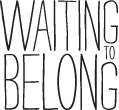Coping with adoption stress
Controlling your emotions to bring healing to your child
By Debi A. Grebenik, PHD
It is through the expression, processing and understanding of our own fears that we can calm our stress. Both parents and children experience stress, so it is imperative that we understand the role stress plays in our relationships, particularly the unique stresses for adopted children.
Stress is triggered through a sensory event, and when this trigger is activated, the amygdala responds with a fight, flight or freeze reaction. This alarm reaction activates the central nervous system. Without the subsequent release of cortisol, the child may become hypervigilant toward all situations, perceiving every event as a threat. This arousal can be mitigated through positive repetition in the environment and in relationships.
For example, a child adopted at age five goes to a department store with his mother, walks through the cologne section en route to the clothing department, and then immediately becomes agitated and starts crying and yelling. The mother, unaware of what is going on, finds herself angry, scared and frustrated and easily displays a negative behavioural reaction to her son. She may respond by yelling at him or grabbing him roughly and leaving the store.
A mother who understands that trauma occurred in her son's first three years of his life demonstrates emotional flexibility, not rigidity. The first step she could do, whether she understood the trigger or not, would be to sit on the floor in the store and say to her son, "I'm not going anywhere, you are safe." The child calms after a few minutes because the mother is calm. She doesn't react to his behaviour with her own stress but attempts to discern that his behaviour has a reason behind it. Many adopted children cannot express their pain or prior trauma through their words, so they use their behaviour.
This mother may later discover that her child was around an angry man, the boyfriend of his mother, who wore the cologne he smelled. This smell acted as a trigger to his stored trauma memory and caused him pain, which manifested in his behaviour. But whether she ever understands the reason, she has calmed his deeper fear with her reaction. Your own stress regulation during these acting out episodes is vital. You are calming the child as he expresses his pain.
Also important to consider is that adoptive children will trigger any unresolved issues adoptive parents may have. These issues may include child abuse, family death, uncontrollable anger, a parent's absence, failed marriage, relative incest, alcohol dependence, generational trauma, financial difficulties, spiritual warfare, emotional depression or unresolved infertility. Because these traumatic events may be stored unconsciously in the state level of memory,1 they rear up as ugly monsters when triggered.
Trauma must be expressed and processed to be understood. Once understood, the trauma may be integrated into our lives, without holding us captive to its power. While most of us strive for resolution because we want our lives to be neat and tidy, the focus must be on integration rather than resolution. If these traumatic events of the past are not processed, parents will continue to be triggered by their child's behaviours.
The best gift an adoptive parent can give her adopted child is to be regulated and to create a regulated environment. To be regulated means the ability to experience and maintain stress within one's window of tolerance. In contrast, if one member of the family is dysregulated, the entire family system experiences the ramifications. When a stressor event is prolonged, overwhelming or unpredictable, or if the events continue on unexpressed, unprocessed and misunderstood, additional stress occurs.2 Only when these traumatic events are processed in the context of a loving, regulated relationship can the adoptive parent be free to parent from a place of love, not fear. Then she can truly respond, not react to her child's behaviours.
This beginning leg of the journey requires flexibility in expectations about the child, coupled with the ability to change your expectations to match the capabilities of the child you adopt. When we are flexible and adaptive, we can demonstrate a true acceptance of the child, her differences and her needs. In the book, Living from the Heart Jesus Gave You, James Friesen states that "wounded people heal in relationships . . . Growth, repair, maturity and faith development are all intimately tied to relationships. People do need to achieve wholeness in a fractured world."3
When a child is removed from his birth mother, he experiences trauma. This trauma can be mitigated through an authentic relationship with the adopted parent. You must be aware of the trauma first and then understand the power of relationship – how it must be a lifelong commitment with flexibility and acceptance during the journey. You may adopt a child who is older and did not have a nurturing home environment the first years of his life. These children may take longer to heal, however, all healing takes place in the context of relationship.
This healing is parallel to the healing Jesus promises when He says to us, "Come to Me, all you who are weary and burdened, and I will give you rest. Take My yoke upon you and learn from Me, for I am gentle and humble in heart, and you will find rest for your souls" (Matthew 11:28-29).
Next article in series: A Network of Support
Start of series: Traits of Successful Adoptive Families
- Heather T. Forbes and B. Bryan Post, Beyond Consequences, Logic and Control (Orlando, FL: Beyond Consequences Institute, LLC, 2006), 4.
- Ibid, 16.
- James Friesen, Living From the Heart Jesus Gave You (Pasadena, CA: Shepherds House Inc, 1999), 13.
Excerpted from Handbook on Thriving as an Adoptive Family, a Focus on the Family book published by Tyndale House Publishers, Inc., © 2008 by Sanford Communications, Inc. Used with permission.
